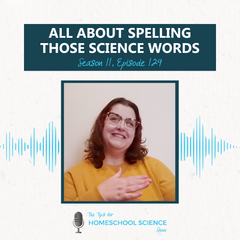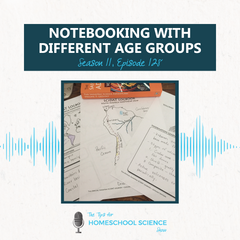FREE Shipping on all our products! (Please Note: Orders may experience a delay of a week or more in shipping due to the high volume of orders at this time of year.)
FREE Shipping on all our products! (Please Note: Orders may experience a delay of a week or more in shipping due to the high volume of orders at this time of year.)
Roll up your sleeves, it is time to design your science fair project experiment!
July 17, 2017 2 min read
Roll up your sleeves, it is time to design your experiment! {Science Fair Project Challenge Episode 4}
Roll up your sleeves - it's time for the nitty gritty fun to begin!
In the fourth science fair project challenge episode, we are going to discuss how to design an experiment to test your hypothesis.
Listen to this Episode
Share the Tips
If you found these homeschool science tips to be helpful, would you please take a moment to rate it in iTunes or Stitcher? This would help me tremendously in getting the word out so that more ear buds are filled with science-teaching encouragement.
Step 4: Design an Experiment Highlights

The fourth step of the science fair project is to design an experiment. This stage is patterned after step four of the scientific method.
At this point in the science fair project, the students have a chosen a topic, done some research and formulated their hypotheses. Now, they are ready to design their experiment.
The students may find this step to be a bit challenging, but a well-planned experiment design will yield reliable results.So, it is important that you take the time to walk the students through this process.
The students need to:
- Brainstorm for possible ways to test their hypotheses and choose one of those methods for their experiment.
- Determine their variables.
- Plan their experiment around one of those methods of testing.
- Review their hypotheses to make sure that their experiment design will prove their statement true or false.
Once they have a design in place, the students are ready to perform their experiment, which is the next step!
Resources for this Science Fair Project Step
Download the science fair project worksheets to use as you go through this step with your students.
Check out the following posts for help with completing this step of the science fair project:
Also in {Podcast} The Tips for Homeschool Science Show
All About Spelling Those Science Words {Season 11, Episode 129}
March 25, 2024 7 min read

In this episode, we'll be interviewing Robin Williams from All About Spelling. Click "Read More" to listen is as we discuss tips and tricks for spelling all those science words!
How should you handle notebooking through the different ages? {Season 11, Episode 128}
March 18, 2024 3 min read

Writing in Science with a Well-Trained Mind (Interview) {Season 11, Episode 127}
March 11, 2024 16 min read

Click "Read More" to listen in as Susan Wise Bauer and Susanna Jarret join Paige to share tips and tools about the third key to teaching science!
Subscribe
Sign up to get the latest on sales, new releases and more …

